Explain Why Clouds Develop Along Cold Fronts and Warm Fronts
Once this boundary resumes its forward motion becomes a warm front or cold front. On weather maps cold fronts are shown as lines with triangular teeth.
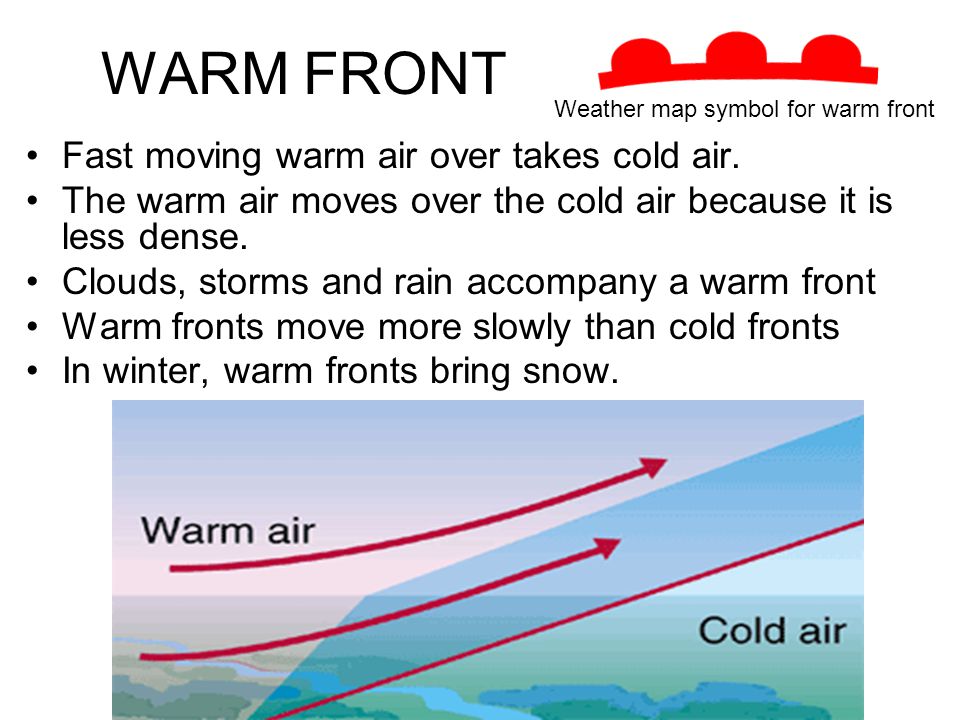
Weather Fronts And Air Masses Ppt Video Online Download
It may become a cold or warm front or a frontal wave may develop as we will see in the next section.
. Fronts occur when two large masses of air collide at the Earths surface. During the passage of a warm front wind direction shifts from east or southeast in the cold sector to southwest in the warm sector in the northern hemisphere. You will often see high clouds like cirrus cirrostratus and middle clouds like altostratus ahead of a warm front.
If enough moisture exists in the atmosphere at this time then clouds and possibly thunderstorms could develop. Because the air mass is rising along the warm front clouds form and steady precipitation may occur. The warm air climbs over the cold air and a series of clouds appear over the sky ahead of the warm front and cause rainfall.
Warm fronts often form on the east side of low-pressure systems where warmer air from the south is pushed north. The cyclonic circulation results in a well-built extratropical cyclone with a cold front and a warm front. Winds increase stronger as the cold front passes.
What is a warm front. Many different cloud types can be created in this way. Describe the pressure and wind patterns of a midlatitude cyclone.
Cumulonimbus clouds are formed. A stationary front may oscillate back and forth causing changing winds and weather conditions at a given location. The cyclonic circulation leads to a well-developed extra tropical cyclone with a warm front and a cold front.
The cold front approaches the warm air from behind and pushes the. Stationary fronts may quickly change back to moving fronts as a slight imbalance of forces acting on the air masses develops. Warm fronts are associated with uniform low-lying stratus clouds while cold fonts are accompanied by storm clouds with a significant vertical buildup like cumulonimbus clouds.
Overrunning of warm air along such a front causes frontal precipitation. Fronts occur when two large masses of air collide at the Earths surface. Cold air is more dense than warm air so when a warm air mass meets a cold air mass the cold air ends up below the warm air.
With a basic description of each frontal system out of the way individually focussing on each weather phenomenon will provide a clearer understanding of the differences and similarities. Cold fronts generally move faster than warm fronts. Cold fronts that promote currents of sinking air in their wakes are called katafronts.
Cold fronts move much faster than warm fronts. Warm fronts move more slowly than cold fronts because it is more difficult for the warm air to push the cold dense air across the Earths surface. Describe the location of fronts and the surface sectors of a mature.
The wind motion on both sides of the front is parallel to the front. Essentially an occluded front forms as three. The mixing of air behind the cold front with the cooler air in front of the warm front as the two merge causes the air temperatures to drop significantly.
What is a cold front. As a result a cold front will sometimes overtake an existing warm front. For example in a warm front there is cool air ahead of thefront and so.
These show where the cold air mass is wedging under the warm air mass. Cumulus or cumulonimbus clouds and thunderstorms form as warm air is lifted ahead of the front. A katafront by definition is a front with sinking air currents on its cold side.
The cloud and precipitation pattern associated with a cold front is usually narrower than the cloud and precipitation pattern associated with a warm front. The boundaries between air masses are often zones of very rapid changes in temperature and moisture. Combined with the majority of moisture lost along the edge of the front due to precipitation it typically leaves a body of cold and dry air trailing behind an occluded front.
The warm air glides over the cold air and a sequence of clouds appear over the sky ahead of the warm front and cause precipitation. The cold air mass pushes under the warm air mass because of its higher density forcing this warm air to rise. Warm fronts produce clouds when warm air replaces cold air by sliding above it.
Clouds form along fronts when there is some type of uplift ofair. Warm or cold front stops moving so the name stationary front. Why is an air mass unlikely to form over California.
In fact the speed of a cold front is about double that of a typical warm front. Weather fronts can cause clouds to form. Once the air has risen it cools and clouds can form.
The air behind the cold front is colder denser than the cool air ahead of the warm front. An occluded front is a composite of two frontal systems that merge as a result of occlusion. There are pockets of warm air or warm sector wedged between the forward and the rear cold air or cold sector.
The denser cold air lifts both the warm air and the cool air that the warm air was overrunning. Weather along a stationary front. Explain why clouds develop along cold fronts and warm fronts.
Cold fronts move faster and they are more likely to promote uplift at the edge of the front which creates clouds and precipitation in that narrow area. Altocumulus altostratus cirrocumulus cirrostratus cirrus cumulonimbus and associated mammatus clouds. The cold front moves faster than the warm front and overtakes it to form an occluded front.
There are two reasons 3. A cold front separates a cold dry air mass from a warm air mass. Weather fronts can cause clouds to form.
In the wake of the front cold-air advection tends to promote currents of sinking air which helps cause clouds to evaporate promoting clearing or partially clearing skies. The heavier denser cool air pushes under the lighter less dense warm air as a cold front advances through an area forcing it to climb into the troposphere. Enormous swirling storms tend to develop along these zones of rapid change.
Warm fronts produce clouds when warm air replaces cold air by sliding. There are pockets of warm air compressed between the forward and the rear cold air.

Clouds Form Due To Weather Fronts Center For Science Education
Weather Systems Get Into Geography

What Causes A Cold Front Warm Front Stationary Front Lisbdnet Com

Acurite Blog What Is A Warm Front Acurite
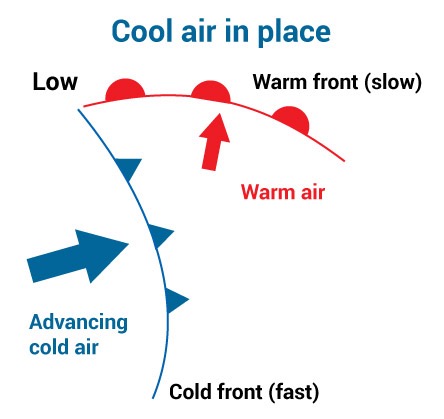
Acurite Blog What Is A Warm Front Acurite

An Occluded Front From An Introductor Y Textbook Excerpt From Williams Download Scientific Diagram
Chapter 12 Fronts And Airmasses Atmospheric Processes And Phenomenon

Fronts 4 Different Types 1 Cold Front 2 Warm Front 3 Stationary Ppt Video Online Download
Where Do Clouds Begin To Form When There Is A Cold Front Quora

What Is A Cold Front And How Can It Impact Your Plans Accuweather

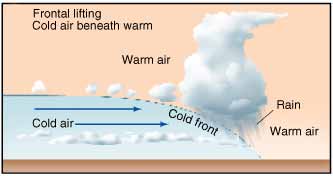
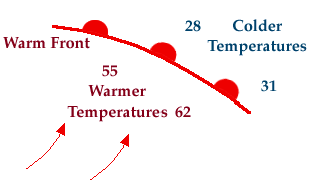

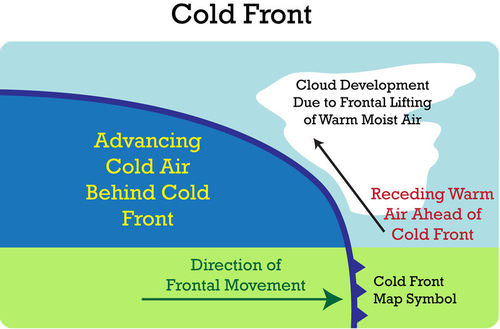


Comments
Post a Comment